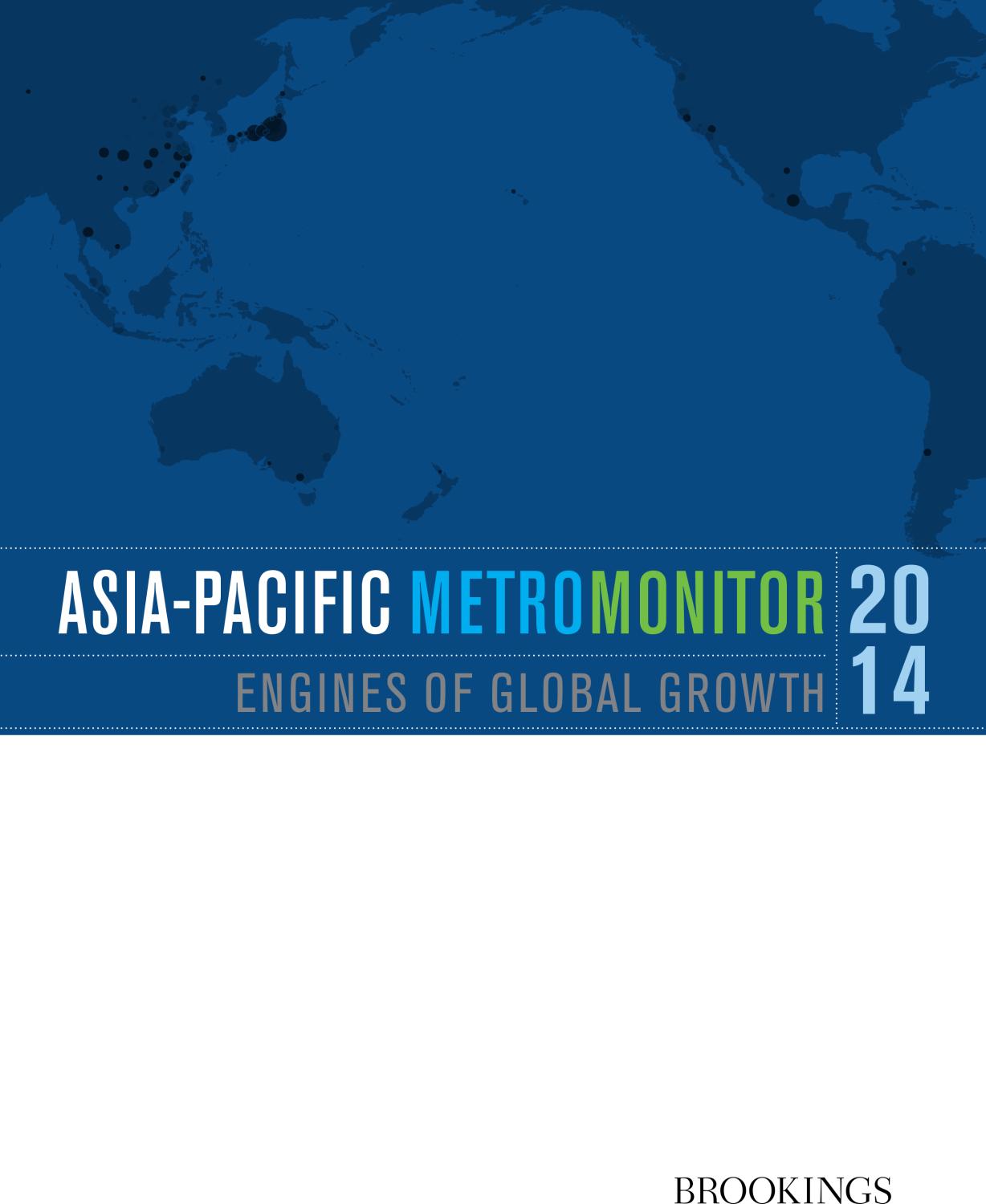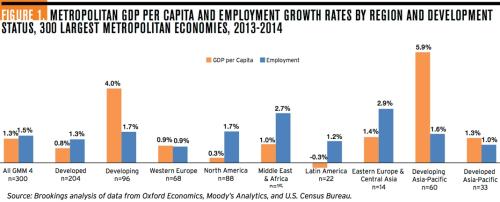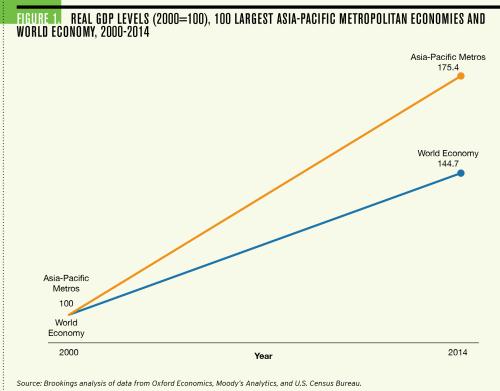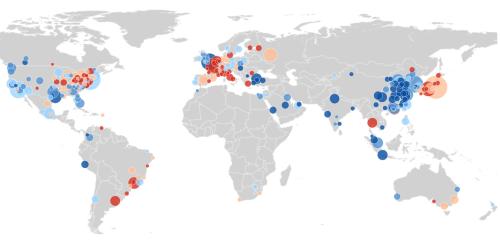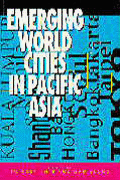In recent years, a significant share of global economic output and growth has concentrated in large cities in the Asia-Pacific region—the stretch of countries from East Asia to Oceania to the western parts of North and South America. Analyzing growth in employment and GDP per capita in the 100 largest metropolitan economies in the Asia-Pacific region, this report finds that:
- The 100 largest metropolitan economies in the Asia-Pacific region together accounted for 20 percent of global GDP and 29 percent of global GDP growth in 2014. They are some of the fastest-growing economies in the world, registering 3.5 percent output growth, 2.6 percent GDP per capita growth, and 1.5 percent employment growth in 2014, outpacing global averages.
- Within the Asia-Pacific, Chinese metro economies experienced the fastest GDP per capita growth, and North American metro areas registered the fastest employment growth in 2014. Seventy percent of the fastest-growing Asia-Pacific metro areas were located in mainland China. By contrast, 65 percent of the slowest-growing metro economies were in Australia and Japan.
- Nearly 30 percent of Asia-Pacific metro areas were “pockets of growth” in 2014, growing faster than their national economies on both GDP per capita and employment. About half of these pockets of growth were in China, and all but five of those were located in rapidly developing inland provinces. The rest of these outperforming metro economies were located in North America (6), Latin America (3), Southeast Asia (3), East Asia (2), and Oceania (1).
- Asia-Pacific metro areas specializing in business, financial, and professional services registered the fastest growth in employment in 2014, while GDP per capita growth was highest among metro areas specializing in commodities and utilities. Manufacturing is the most common industrial specialization among Asia-Pacific metro economies (31), followed by business, financial, and professional services (17); transportation (14); and trade and tourism (12).
As the engines of their respective national economies and the hubs for the trade and investment ties that increasingly bind cities across the Asia-Pacific region, their performance remains critical to prospects for lasting and broadly shared regional and global growth.


